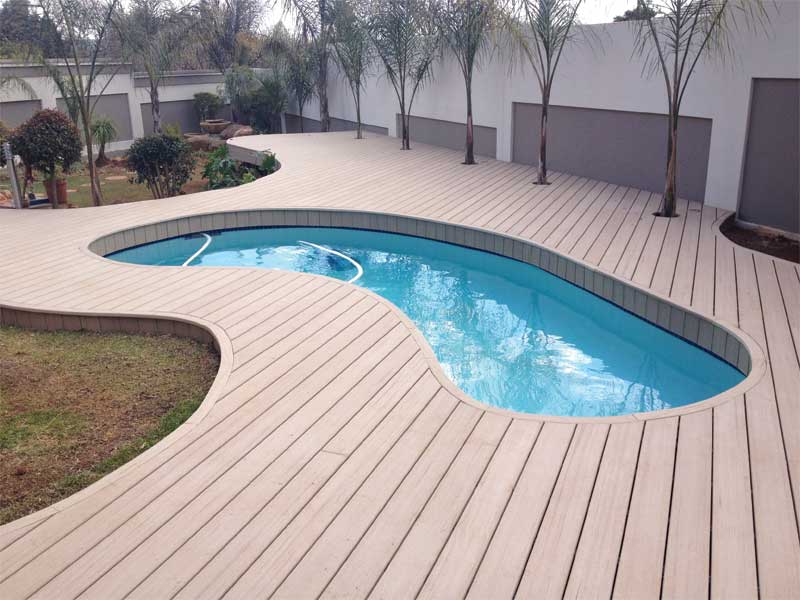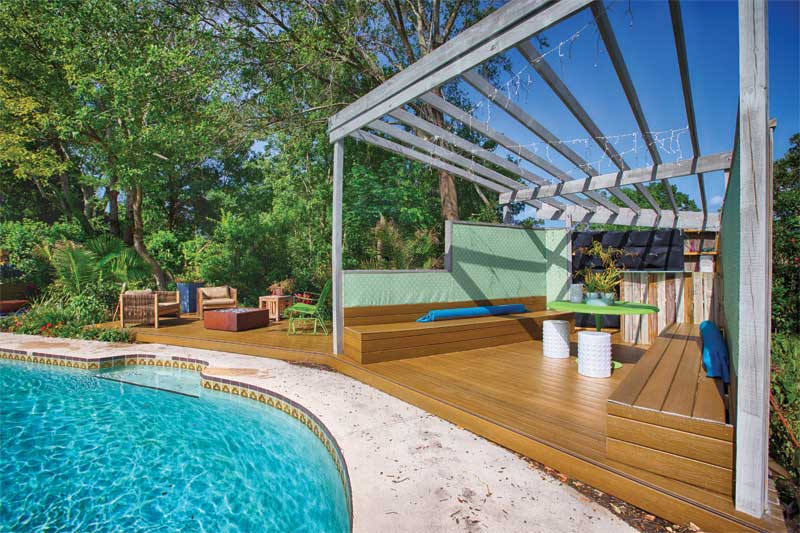Comfort and safety

Walking barefoot on a wood deck—especially one that has deteriorated from years of exposure—can result in painful splinters. Composite decking materials are splinter-free, so they provide a comfortable surface for walking, sitting, or lounging on.
With frequently wet surfaces, another important safety factor for decks near pools and hot tubs is slip resistance. Popular composites are not as slippery as wood decking, and have roughly the same coefficient of friction as smooth asphalt.
Another thing to consider when selecting deck materials is surface temperature. Dark-coloured decking, especially denser products, can become uncomfortably hot for bare feet when exposed to direct sun. To mitigate this in sunny climates, building professionals can specify lighter colour decking, including greys, tans, and similar hues. Some advanced composite boards even address this performance concern by optimizing heat reflection, so the boards absorb up to 35 per cent less heat than conventional capped composite boards in similar colours.
Beauty
For many homeowners, how good the decking looks is just as important as how well it performs. While many of the early composites were not as attractive as wood decking, modern composites offer a rich, warm look with realistic wood-grain details.
Embossing and colouring are two of the most distinctive beauty characteristics of composite decking. In the past, shallow wood-grain embossing and uniform colouring fuelled complaints about composites looking too much like plastic. With recent advances in technology, manufacturers have established ways to vary the colour tones of deck boards to resemble traditional wood. Purposefully designed with patterns that are more variable, today’s composite boards achieve the natural characteristics (i.e. colouring and grain) of wood deck boards.
Manufacturers have unique embossing patterns and techniques, which are increasingly more sophisticated. Deeper and more detailed embossing can catch light differently, better mimicking the random patterns of a wood deck board. Enhanced embossing also allows for easier cleaning and can help hide normal wear and tear.







